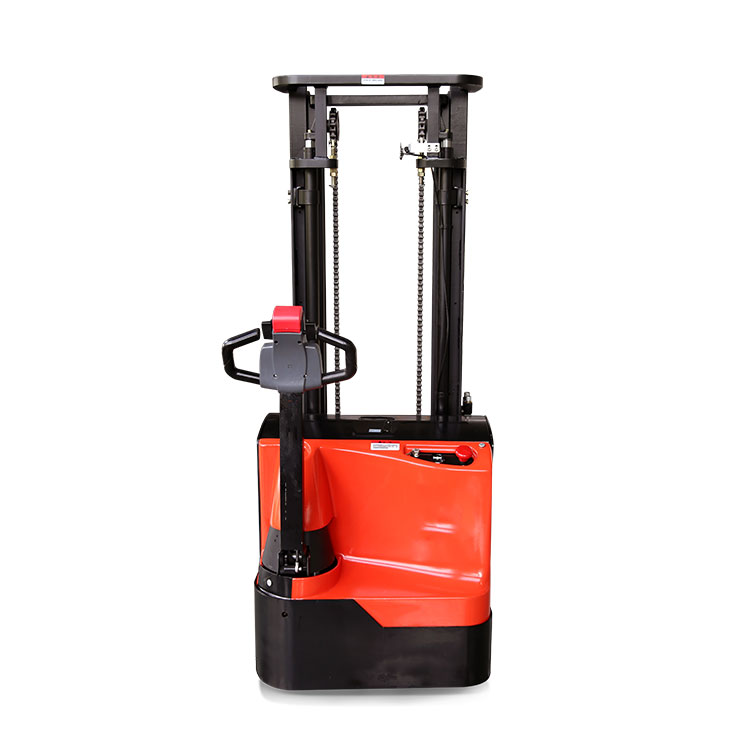Product name |
| Electric Stacker |
Drive |
| Electric |
Operator type |
| Pedestrian |
Load capacity | KG | 2000 |
Load center distance | MM | 600 |
Load distance centre of drive axle to fork | MM | 693 |
Wheelbase | MM | 1305 |
Service weight | KG | 1170 |
Axle loading, laden front/rear | KG | 850/2320 |
Axle loading, unladen front/rear | KG | 780/390 |
Tyre type |
| Polyurethane |
Turning radius | MM | 1589 |
Travel speed, laden/unladen | km/h | 4.5/5.0 |
Service brake |
| Electromagnetic |
Type of drive control |
| AC |
Steering design |
| Mechanical |

PRODUCT FEATURE
SAFER
■ Hydraulic system explosion-proof design, even if the pipe burst, the door frame will not fall quickly, improve safety;
■ Emergency reverse driving function, so that the operator to avoid injury;
■Emergency power off switch, can easily cut off all power when the operation is out of control, to avoid emergency accidents;
■ Multiple lifting limits, safer stacking;

■ After the fork is lifted to a certain height, the vehicle operation automatically switches to the slow mode, which is safer;
■ The anti-skid braking function prevents the car from sliding when it is out of control or driving on a slope.
Electric Stacker: Expanding Usage in Various Fields

Electric stackers, also known as electric pallet stackers, are versatile material handling equipment commonly used in warehouses and distribution centers. However, the scope of their applications can be extended to other fields such as construction sites, waste processing facilities, port terminals, and more. This article explores the diverse range of applications for electric stackers and how they can meet the specific requirements of different environments.
1. Construction Sites
Electric stackers are increasingly being used in construction sites for lifting and moving heavy materials such as bricks, blocks, and bags of cement. Their compact size and maneuverability make them ideal for navigating through tight spaces and narrow aisles on construction sites. With their ability to lift loads to various heights, electric stackers are essential for stacking materials on scaffolding or loading trucks with ease.
2. Waste Processing Facilities
In waste processing facilities, electric stackers play a crucial role in handling and transporting bulky waste materials such as cardboard, plastics, and metal scraps. Their robust construction and high load capacity make them suitable for lifting heavy loads and maneuvering through rugged terrains. Electric stackers equipped with specialized attachments like clamps or rotators can efficiently handle different types of waste materials, improving operational efficiency and safety in waste processing facilities.
3. Port Terminals
Port terminals require efficient material handling equipment to load and unload cargo from ships and transport them to storage areas. Electric stackers are well-suited for these tasks due to their ability to lift heavy containers and pallets with precision and control. With their electric-powered operation, stackers can operate quietly and emit zero emissions, making them environmentally friendly options for port terminals. Additionally, electric stackers can be equipped with telescopic masts or reach forks to handle containers at varying heights, maximizing productivity in port operations.
In conclusion, electric stackers have a wide range of applications beyond warehouses and distribution centers. From construction sites to waste processing facilities and port terminals, electric stackers can adapt to diverse environments and meet the specific requirements of different industries. By leveraging the versatility and efficiency of electric stackers, businesses can enhance their material handling operations and improve overall productivity.


























